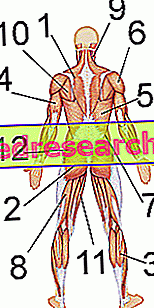By Dott.Luca Franzon
Given the growing interest that it is creating around itself if one of the last disciplines belonging to the family of winter sports, namely snowboarding, and given the increasing number of practitioners, it seemed appropriate, considering also the time of year to carry out some studies concerning some of its characteristics, in order to be able to plan an appropriate athletic preparation, which allows the practitioners to perform the most varied evolutions on the slopes in safety because they are ready on a muscular level. Following accurate biomechanical and kinematic analysis of the technical gesture, it was seen that there were two fundamental neuuscular qualities for performing the correct riding technique of snowboarding: the capacity for explosive strength, resistance and the capacity for proprioceptive control.

The first periods in the gym will be dedicated to training the cardio-respiratory system, then with methods that can go from the slow and prolonged bottom to the HIIT methods. Even stretching will be essential right away to make the musculature more malleable, therefore able to assume unconventional postures and more resistant to technical movements. Last physical characteristic to immediately insert proprioceptivity, using elastic nets, special tablets, vibrating platforms and whatever else is able to stimulate the articular receptors in order to train the joints to continuous variations of position and load, which happens continuously on of a ski slope. The time will then come to train the muscles so that they become strong and resistant at the same time.
I think the best way to train these two muscular characteristics is to use specific circuits. Snowboarding is a discipline that requires more athletic skills to be performed at the same time with more calls than one or the other depending on the movement you intend to perform. It is also important to remember that snow is practiced in environmental conditions that are not favorable to the muscles or at low temperatures, even if in this case the equipment present to the present day is meeting the practitioner, who through the use of special fabrics tend to reduce practically to zero the drawbacks of the cold.
Perhaps one of the biggest problems that we have to face is that of people who do not practice any sporting activity throughout the year and in December they are improvised skilled snowboaders and advanced athletes with results of ready full rescue!
The muscles that will need to be more trained will be the lower limbs, followed by the abdominals and paravertebral muscles and finally the trunk and upper limbs that are less stressed by this type of sport. It would be good for those who want to prepare athletically for this sport to show up in the weight room at least three times a week, alternating cardiovascular training sessions with muscle strengthening sessions. The sessions we say aerobic will be preceded by a warm-up from proprioceptive exercises and stretching at the end of which a specific training will be performed that brings improvements to the heart and lungs. The strengthening sessions through the use of overloads will be set as we previously said in the circuit. The circuits will be repeated several times, a fundamental characteristic will be to alternate a lap with low repetitions and high load with one lap with high repetitions and low loads. The purpose of these circuits will be to make the muscles strong and resistant so that during the descent the subject is able to withstand the considerable stresses and to be able to change direction or jump if the need arises.
Another method to develop explosive strength and reactivity is plyometrics, which consists in subjecting a muscular district to a stretching action immediately followed by a concentric contraction. In this way the muscle subjected to stretching accumulates a certain amount of energy that it uses in the subsequent contraction, thus increasing its intensity.

The evolution of training for snowboarders will follow the traditional intensification lines of any athletic preparation, that is alternation of intensity and volume, recall of specific characteristics and preparation of the athletic gesture with the aim of minimizing the risk of injuries. At the end of the preparation, all that remains is to organize the gym white week, a great way to build customer loyalty and relax while having fun together.
EXERCISE | Series and repetitions | Time |
| HEATING | 10 ' | |
| CRUNCH | 3 x MAX | |
| CRUNCH INV | 3 x MAX | |
| hyperextension | 3 x 15 | |
| SQUAT | 6-30-6-30 | |
| CALF ON FOOT | 6-30-6-30 | |
| STEP | 3 MINUTES | |
| LEG CURL | 6-30-6-30 | |
| LEG EXTENSION | 6-30-6-30 | |
| BIKE | 3 MINUTES | |
| ADDUCTOR | 6-30-6-30 | |
| LEG PRESS | 6-30-6-30 | |
| STEP | 3 MINUTES | |
| sank | 6-30-6-30 | |
| DAMAGE OF TESE LEGS | 6-30-6-30 | |
| COOL DOWN | 10 ' |
Prepare a cross-country race
Prepare a large background
Physical preparation for skiing



